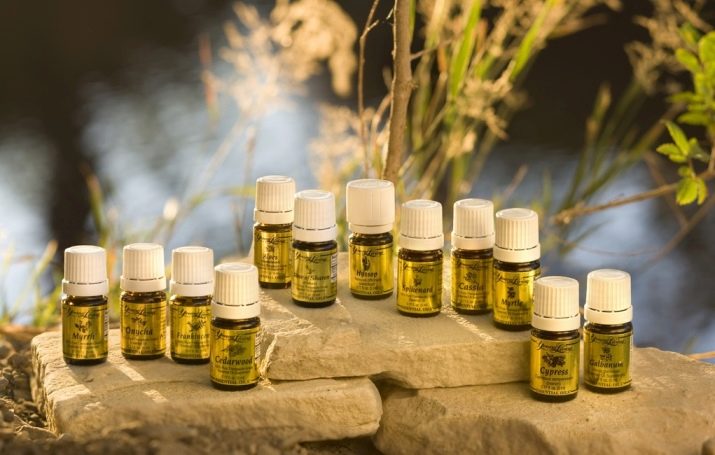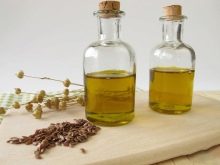Recently, many women prefer to use a variety of oils as skin care products. And this is not surprising, because this cosmetic product is not only natural in origin, it carefully cares for dermis, regardless of its type. When choosing a certain oil for cosmetic procedures for the face, it is necessary to take into account the comedogenicity of this drug. Let's take a closer look at this indicator, as well as figure out which oils are comedogenic and non-comedogenic.

The concept of comedogenicity
The use of similar terminology in relation to oil products comes from the word "comedone", which means black dots that impair the complexion, as well as negatively affecting the appearance of the dermis. In some situations, if a young lady does not properly care for the skin of the face, they can provoke the formation of acne and blackheads.

Unfortunately, comedones can appear in both adolescence and adulthood.
To understand what comedogenicity of oils is, it is necessary to recall the basics of the school course of anatomy. Each hair, regardless of where it appears, develops in a special depression on the surface of the epidermis. This deepening is also called the follicle.
In order for the hair to develop and grow, it is lubricated with subcutaneous fat, which is produced by the sebaceous glands. If the duct becomes clogged, then comedone appears at this point. When creating a favorable environment for the development of bacteria, the area with comedone can become inflamed and a pimple forms.

If the cosmetic oil for the face was not selected correctly, it can also provoke a blockage of the duct. Fortunately, not all oil products have the ability to clog pores.


Many of them, on the contrary, are characterized by a therapeutic effect and allow you to care for oily or problematic dermis.
The comedogenicity of various oils is evaluated on a five-point scale:
- 0 - indicates that the oil product belongs to non-comedogenic variants and is not able to clog pores;
- 1 - such a product is characterized by a low degree of comedogenicity;
- 2 - a similar oil is characterized by moderately low levels of comedogenicity;

- 3 - oil products are moderately comedogenic options;
- 4 - oils with a sufficiently high comedogenicity margin get such a figure;
- 5 - the maximum value belongs to oil products, which are very comedogenic options.



Power
Zero and low
As mentioned above, non-comedogenic oils include those oil products for which a similar indicator is 0 or 1. They are distinguished by a liquid consistency, perfectly spread and distributed over the surface of the skin. Non-comedogenic oils are also characterized by lightness and can be used by the fair sex, who have not only oily or problematic, but also dry or normal skin.
Consider a list of facial oils that belong to non-comedogenic products.
| Oil name | Comedogenicity Index |
| Shi | 0 |
| Safflower | 0 |
| Refined Sunflower Oil | 0 |
| Mango | 0 |
| Made from hemp | 0 |
| Argan | 0 |
| Derived from Rose Hips | 1 |
| Made from black cumin | 1 |
| Sea buckthorn | 1 |
| From sesame seeds | 1 |
| Castor | 1 |
| Pomegranate seed extract | 1 |
| Unrefined Sunflower Oil | 1 |

Oil products, characterized by a zero degree of comedogenicity, do not have the ability to clog pores, on the contrary, they are used as effective means for cleaning them. Oil products, characterized by a first degree of comedogenicity, can be safely applied even to areas of the skin affected by acne.
Moderate
These oil products can manifest themselves in different ways, so it is difficult to predict what effect can be achieved if you use them for a person with oily skin. You can find out the result only by conducting a small experiment. It is necessary to apply this tool to a small area of the dermis and check its effect.

If the skin does not redden and does not become inflamed, then you can safely include such oils in the composition of cosmetic preparations for the care of the dermis of the face and decollete.
Consider in more detail the table of products with moderate and low levels of comedogenicity.
| Oil name | Comedogenicity Index |
| Pumpkin | 2 |
| Tamanu | 2 |
| Sandalwood | 2 |
| Peach seed | 2 |
| From almond kernels | 2 |
| Avocado Bone | 2 |
| From hazelnuts | 2 |
| Grape | 2 |
| Peanut Fruit | 2 |
| Apricot kernel | 2 |
| Cotton | 3 |
| From soy | 3 |
| From olives | 3 |
| From macadamia | 3 |
| Unrefined Sesame Seed | 3 |
| Corn | 3 |
Oil products characterized by a 2 degree of comedogenicity can be easily used by women who have normal and dry dermis. They perfectly moisturize and restore the skin. It is also recommended to apply preparations based on such oils to get rid of scars that have arisen as a result of the fight against acne.
Oil products, characterized by a 3 degree of comedogenicity, can be applied by the fair sex, who have a very dry type of skin. They can also be used in areas of the dermis, which is not prone to comedones. These are the eyelids, elbows, knees and heels.

High
These oils should not be used by women who have oily or problem skin. Young ladies with this type of skin should avoid applying cosmetic products that contain such oils.Even a small fraction of these components can cause serious damage to the skin.
Consider a list of oils with a high degree of comedogenicity.
| Oil name | Comedogenicity Index |
| Coconut Fruit | 4 |
| From cocoa fruit | 4 |
| From flax seeds | 4 |
| Palm | 4 |
| From wheat germ | 5 |



Oil products, characterized by a 4 degree of comedogenicity, activate the sebaceous glands. They prevent the dermis from breathing, clogging and clogging the pores. The best option for using such oils is in areas of the body that are characterized by an increased degree of dryness. Often they are used to get rid of dry and brittle hair ends. Many people also use them orally as the main ingredients that are part of alternative medicine to combat various diseases.
Despite the fact that the oil obtained from wheat germ is a very useful product, it must be added to cosmetic preparations with extreme caution, observing the minimum dosage. It is recommended to apply it only to those areas of the skin that are not prone to the appearance of comedones.

Beneficial features
Despite the fact that some oils are classified as clogging pores, they are distinguished by a large number of useful properties and are very often used in various cosmetic preparations.
The following options belong to the most popular oils.
- Oil derived from almond kernels. It contains such fatty acids as oleic and linoleic. Thanks to these components, hydration and regeneration of the skin occurs. The structure of almond oil also contains vitamins of groups A, B and E, which help to overcome age-related changes in the dermis, perfectly cope with peeling and help get rid of inflamed areas on the skin.

- Oil obtained from avocado seeds. A small amount of it can be used even on areas of the skin with acne. It helps to perfectly moisturize the dermis.

Thanks to the contained retinol, it can cope with inflammatory processes on the face.
- Coconut Oil, rich in hyaluronic acid, so it is used at the first signs of withering of the dry dermis. It makes the skin more elastic, restoring youth. The beneficial components that make up this oil can fall into the deepest layers of the epidermis, moisturizing and nourishing it.

- Palm oil it is recommended to use young women with a very dry skin type. It helps to cope not only with inflammatory processes, but also to get rid of areas where the skin is very flaky.

Peach seed oil can be applied to combination skin. It allows you to cope with peeling, and also protects against premature wrinkles. Due to the contained essential components it is characterized by antiseptic and anti-inflammatory effect.

As you can see, knowledge of the degree of comedogenicity of the oil helps to choose the best option for any skin type.
How to choose oil by skin type, see the video below.










